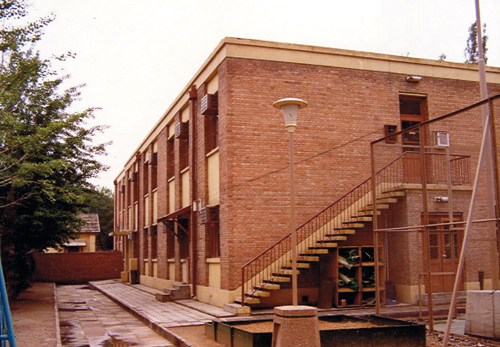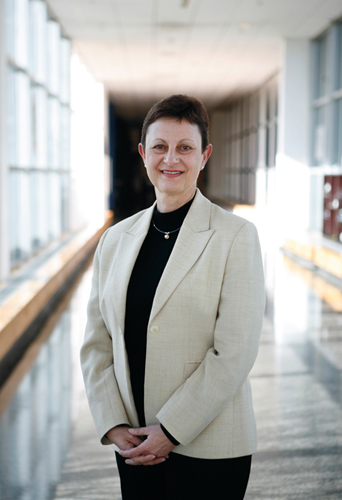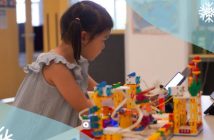
International, local, bilingual, experimental, public, private, independent, embassy … it’s easy to become overwhelmed in the face of the many school choices on offer in Beijing today. It’s also easy to forget that the luxury of choice in education is relatively new here. Schools have grown with the rapid development of the city and changed over the years to meet the needs of Beijing’s diverse expatriate community.
Humble Commencements
As diplomatic relations between the People’s Republic of China and the West were gradually restored in the 1960s and ’70s, overseas governments and companies gradually returned to Beijing. At that time, non-Chinese children were allowed to enroll in one of two authorized local schools with international divisions: Fangcaodi Primary School or the No. 55 Middle/High School. Both remain popular choices for expatriate children today. Given the global political climate at the time, Chinese public schools were not always the appropriate option. Parents scrambled to homeschool or find qualified foreign teachers in the community.
France was the first country to restore diplomatic relations with China, and in 1964 the Lycée Français International de Pékin became Beijing’s first modern embassy school. Others soon followed, including one small classroom on the grounds of what was then known as the United States Liaison Office in Beijing. Tucked in a hallway in a diplomatic apartment compound in Sanlitun, this tiny classroom would eventually grow into the International School of Beijing (ISB). Today ISB is the city’s largest international school.


Growth Movement
To celebrate ISB’s 30th anniversary, Upper Elementary School Assistant Principal Chris Green has been researching the school’s unique history. ISB was founded in 1980 by five English-speaking embassies in Beijing who shared the unofficial American embassy school in the 1970s. The school was "initially for embassy children, and then later for children of expats in Beijing," said Green.
Non-diplomatic families were accepted at embassy-sponsored schools as space allowed, with the unofficial blessing of the authorities, but spaces were limited and the overseas community was growing. By the late 1980s, it became clear that Beijing’s existing embassy schools could not continue to meet the demands of the growing non-diplomatic international community; however, the development of international schools remained slow. New regulations in 1988 allowed ISB to be registered as a "school for diplomatic children" and expand to a new, larger campus at the Lido Hotel complex.
Caroline Chen Gaillard, the founder and director of the International Montessori School of Beijing (MSB), recalls cold-calling embassies, foreign-owned companies, and journalists in the spring of 1990 to see if anyone was interested in enrolling their children in her new kindergarten. The response was very positive and MSB became Beijing’s first independent international kindergarten.
By the mid-1990s the first licenses for "schools for foreign children" were issued, officially granting international school access to all foreign passport holders, rather than just diplomats. MSB was one of the first recipients. In September of 1994, the Beijing BISS International School (BISS) and the Western Academy of Beijing (WAB) were established, rapidly increasing the number of seats available to foreign children. A few other schools followed, but the real international school boom was still to come.
The Big Boom
"Twenty years ago, nobody was interested in education," says Gaillard. "Then things changed." A rapid surge of foreign investment in China after the Asian economic crisis of the mid-1990s made it clear that private education in Beijing was to about to experience tremendous growth.
"I think those were probably the boom years for international schools [in Beijing]," says Lennox Meldrum, high school principal at BISS. "China was growing, the companies were growing, there was plenty of money here," Meldrum recalls. The established international schools were full and expanding. Both ISB and WAB opened new state-of-the-art campuses in the suburbs to accommodate their growing enrollment. Propelled by governmental support for both the expansion of existing schools and the issuance of new international school licenses, the education rush was on. A flurry of new schools threw open their doors between 2002 and 2006. But unlike the original international schools that had roots in the Beijing international community, these new schools were backed by investors and overseas schools.
Both ISB and WAB opened new state-of-the-art campuses in the suburbs to accommodate their growing enrollment. Propelled by governmental support for both the expansion of existing schools and the issuance of new international school licenses, the education rush was on. A flurry of new schools threw open their doors between 2002 and 2006. But unlike the original international schools that had roots in the Beijing international community, these new schools were backed by investors and overseas schools.
New Waves, New Ways
"There have certainly been a lot more schools in the last five to eight years" says Green, who has been with ISB for 14 years. "Each has been trying to create its own niche by focusing on replicating a national curriculum or well-known school model." Green sees a trend in building language skills, particularly Chinese studies for non-native speakers.
MSB’s Gaillard sees this trend as well: "The demand for dual-languageeducation has really increased. Whereas in the early 90s, most parents didn’t want their children learning Chinese."
Bilingual schools, offering a variety of teaching practices, have expanded alongside the international schools. With interest in Mandarin on the rise worldwide and more families settling in Beijing long-term, these schools have seen enrollments grow in recent years.
Even local public schools have become more accessible. In 2006, permission was granted for overseas students to attend any local Chinese school, with or without an official "international section." Nevertheless, schools remain somewhat hesitant to enroll foreign passport holders, and the number of international students at neighborhood schools remains relatively low. Expat families continue to favor local schools with either an "international" or "experimental" school designation.
In contrast, expat families are welcomed with open arms at the city’s new private kindergartens. Unlike regular schools, which must adhere to the national curriculum, local preschools follow general guidelines that give them great flexibility in what they offer. Investment has poured in, and kindergartens now boast a baffling buffet of brands, famous names and teaching styles. The rapid growth, however, means implementation and classroom experiences vary wildly from school to school. There are some wonderful programs out there, but all claims of accreditation and training must be researched before enrollment – a good caveat for schools at all levels, in fact.
Meanwhile, some families continue in the maverick tradition of the international school pioneers of the past, by joining the city’s small but dedicated community of expat homeschoolers. Resources and curricula from around the world are now available online, making homeschooling more accessible than ever before. Beijing also has an active online homeschooling community that serves as a support network, information source and social hub.

Make Your Match
One of the great advantages of living in Beijing today is the remarkable number of diverse, high-quality education opportunities available. Get out there and visit schools, ask questions and find the best match for your kids. These days, you’re spoiled for choice, and that was not always the case.



